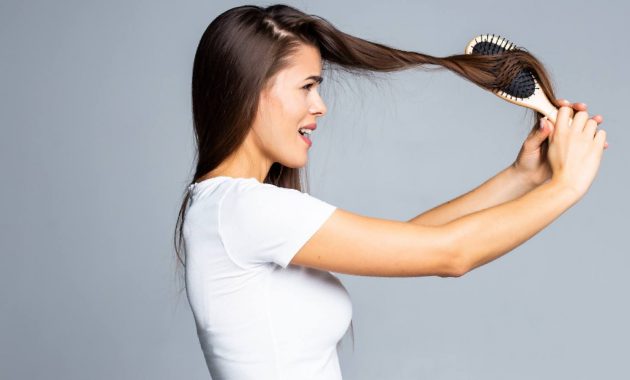Tretinoin is often recommended to treat acne. It is a form of retinoid that can be beneficial for your hair too. Let’s find out if you can use tretinoin for hair growth.
When it comes to skin and hair problems, acne and hair loss probably top the lists. There are many ingredients that may promote hair growth or help to get rid of acne. Some work and some don’t. TikTok users have been singing praises of minoxidil and tretinoin. According to them, this combination can help prevent hair loss. Interestingly, tretinoin is an ingredient that is often recommended by experts to treat acne. If we go by the new claims, it can not only combat acne, but also help with hair growth So, we asked an expert if tretinoin for hair growth works or not.
What is tretinoin?
Tretinoin is a prescription medication that is part of a class of drugs known as retinoids, which comes from vitamin A. “It is mostly used in dermatology for the treatment of various skin conditions, most notably acne and signs of ageing,” shares dermatologist Dr Akriti Gupta.

Tretinoin has been mostly used for the early stages of acne due to its ability to inhibit the formation of comedones, as per a 2011 analysis published in the Journal of Clinical and Aesthetic Dermatology. During the analysis, researchers also found that combining tretinoin with clindamycin turned out to be an effective therapy for treating the various stages of acne. They have antibacterial, comedolytic as well as anti-inflammatory properties.
“Topical application of tretinoin helps to prevent the formation of acne by promoting the skin cells’ turnover. It helps to reduce the clogging of pores,” says Dr Gupta. As a result of fewer clogged pores, the skin can also appear smoother and more even.
How does tretinoin help with hair growth?
During a 2018 research published in the International Journal of Women’s Dermatology, it was found that among healthy women, about 6 to 38 percent experience hair loss, especially in the front portion.
You may also like


As you nourish your hair with healthy food and a proper hair care routine, make sure to add tretinoin to it. Even though many swear by tretinoin for acne, it can also aid in hair growth, especially when used in combination with other treatments. Using the combination of tretinoin (0.01 percent) and minoxidil (5 percent) once every day was found to be effective and safe in treating androgenetic alopecia, also known as male or female pattern hair loss, as per a 2007 research published in the American Journal of Clinical Dermatology.
“It promotes hair growth mostly by improving the efficacy of minoxidil, which is known for treating hair loss,” says Dr Gupta. Tretinoin speeds up the turnover of cells in the scalp, helping to remove dead skin cells and unclog hair follicles, which may promote a healthier scalp environment important for hair growth. It also improves the absorption of minoxidil by increasing the permeability of the scalp skin, making the treatment more effective.

How to use tretinoin for hair growth?
To use tretinoin for hair growth, it is typically combined with topical minoxidil or other hair growth treatments. Here’s how to do it:
- Wash and dry your scalp thoroughly.
- Apply a little bit of tretinoin gel or cream (0.025 to 0.05 percent) to the affected
area of the scalp, usually at night. - After the tretinoin dries up, (usually 20 to 30
minutes), apply minoxidil (2 or 5 percent).
“You can begin using tretinoin two or three times in a week. Then increase the frequency to nightly, but it all depends on how well your scalp tolerates it. As for minoxidil, apply it in the morning and evening every day,” says the expert. You may see the results 3 to 6 months later, but use them continuously.
What are the side effects of using tretinoin for hair growth?
Tretinoin can enhance hair growth treatments, but it may have some side effects –
- Scalp irritation commonly includes redness, itching, dryness, or peeling.
- Your scalp may become more sensitive to the sun, so the risk of sunburn goes higher.
- You may experience increased hair shedding initially, as hair follicles enter a new growth cycle.
- Contact dermatitis, an allergic reaction causing severe irritation, may occur in rare cases.
These side effects of tretinoin can often be managed by adjusting the frequency of application or using a lower concentration. “But people with sensitive skin, eczema, or a history of severe allergies should avoid tretinoin, as it can exacerbate irritation and inflammation,” says the expert. Pregnant or breastfeeding women should also avoid it due to potential risks to the baby. Also, those with severe sun sensitivity or who spend a lot of time in the sun should be cautious, as tretinoin increases the risk of sunburn.
Tretinoin is a great way to combat acne, and can be used to promote hair growth. But it works best when clubbed with other hair growth treatments.
#Tretinoin #hair #growth #Benefits #side #effects
